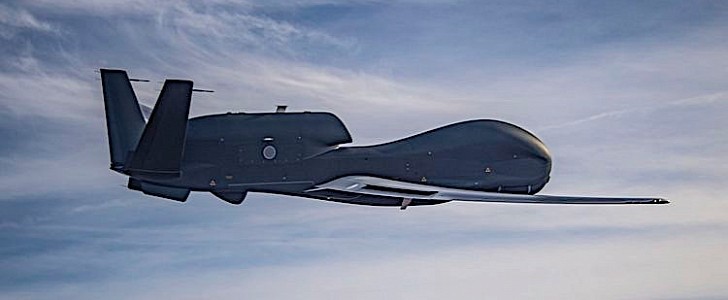The Pacific Ocean is a very big and deserted place. From the Western coast of America, for instance, to the shores of Japan, there are no less than 5,300 miles (over 8,500 km, shortest distance) of deep, cold water, with few patches of land to come to the rescue if the worst was to happen.
There are, of course, both civilian and military aircraft, not to mention vessels, that venture to cover the vast expanses between America and the Land of the Rising Sun, and almost all of them make it across safely. And as of this week, the same can be said about Japan’s own version of the RQ-4B Global Hawk drone.
That would be a variant of the Northrop Grumman-made machine intended specifically for use by the Japan Air Self-Defense Force, in the works for some time now over in America.
Having had its first test flight back in April of last year, the Japanese version of the drone, or at least the first in a series of three, was deemed ready enough to be sent on a transpacific journey from the place where it was born to the place where it will work.
On March 10, an RQ-4B Global Hawk took off from Palmdale, California. It headed west, being ferried over the water, and kept going for 18.7 hours, landing on March 12 at the Misawa Air Base in Japan.
“The arrival of the first Japan Global Hawk is an important milestone in the development of this critical security asset,” said in a statement Jane Bishop, vice president and general manager, global surveillance, Northrop Grumman.
“The autonomous Global Hawk will provide the Japan Air Self-Defense Force with persistent, high-altitude surveillance of the Indo-Pacific. Global Hawk’s intelligence, surveillance and reconnaissance (ISR) capabilities will provide invaluable support to Japanese national security and to the security of allies across the region.”
Introduced in 1998, the Global Hawk is powered by a turbofan engine that gives it a top speed of 357 mph (575 kph). The distance it covered this week is about half of what it can achieve on its own, with the company behind it rating the maximum range at 10,000 miles (16,000 km), and the flight time at about 30 hours.
That would be a variant of the Northrop Grumman-made machine intended specifically for use by the Japan Air Self-Defense Force, in the works for some time now over in America.
Having had its first test flight back in April of last year, the Japanese version of the drone, or at least the first in a series of three, was deemed ready enough to be sent on a transpacific journey from the place where it was born to the place where it will work.
On March 10, an RQ-4B Global Hawk took off from Palmdale, California. It headed west, being ferried over the water, and kept going for 18.7 hours, landing on March 12 at the Misawa Air Base in Japan.
“The arrival of the first Japan Global Hawk is an important milestone in the development of this critical security asset,” said in a statement Jane Bishop, vice president and general manager, global surveillance, Northrop Grumman.
“The autonomous Global Hawk will provide the Japan Air Self-Defense Force with persistent, high-altitude surveillance of the Indo-Pacific. Global Hawk’s intelligence, surveillance and reconnaissance (ISR) capabilities will provide invaluable support to Japanese national security and to the security of allies across the region.”
Introduced in 1998, the Global Hawk is powered by a turbofan engine that gives it a top speed of 357 mph (575 kph). The distance it covered this week is about half of what it can achieve on its own, with the company behind it rating the maximum range at 10,000 miles (16,000 km), and the flight time at about 30 hours.







